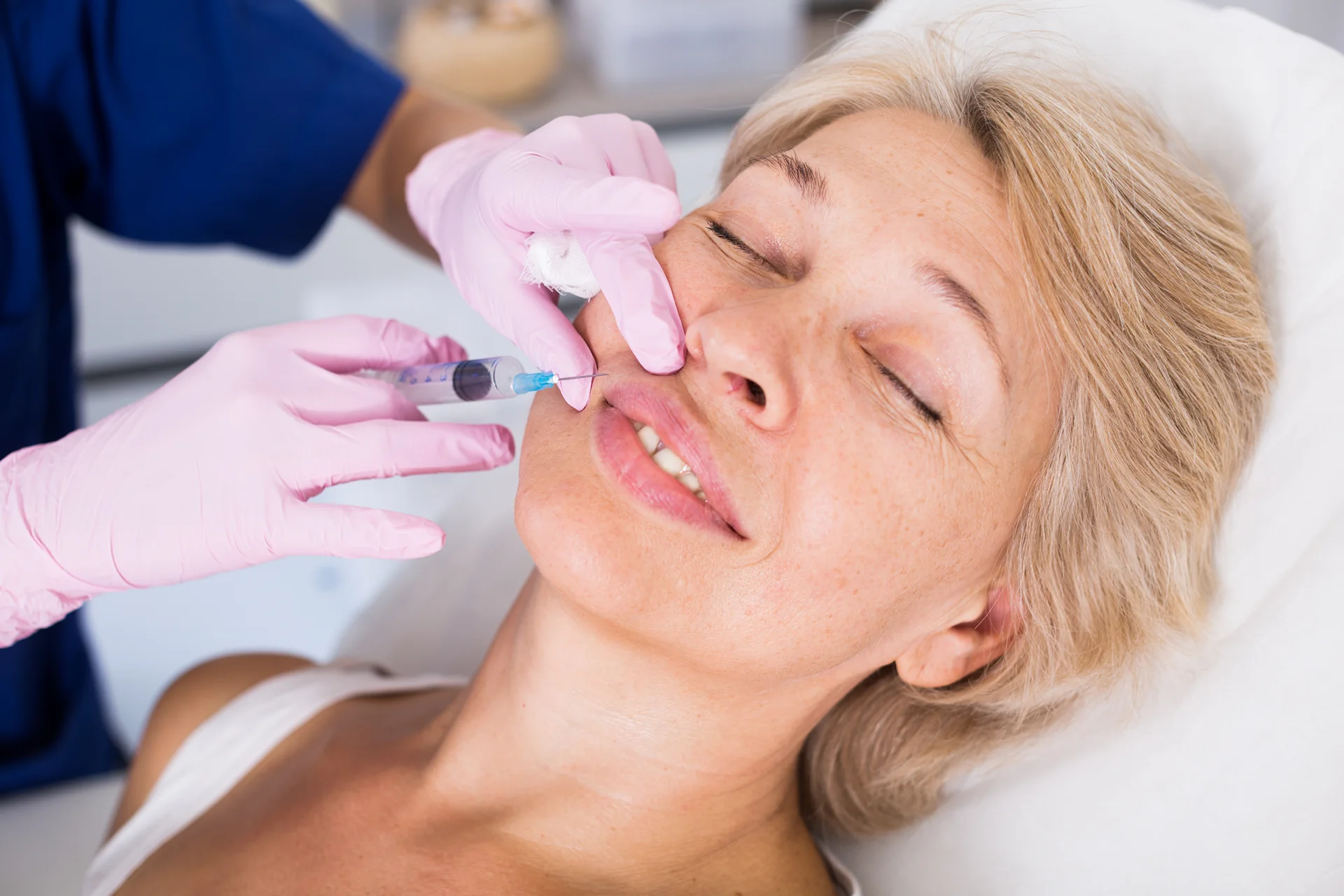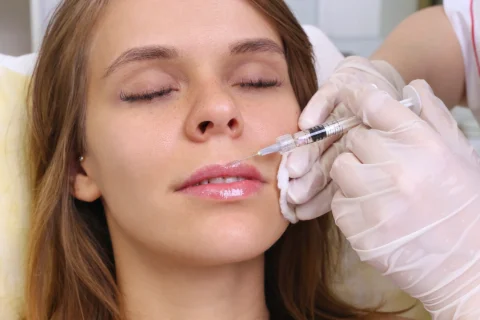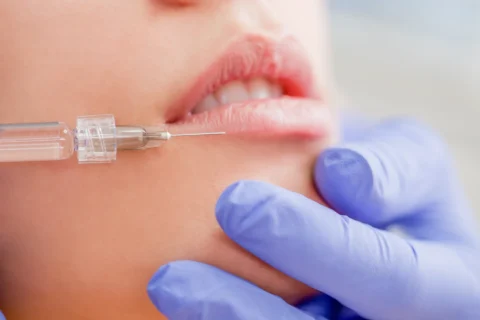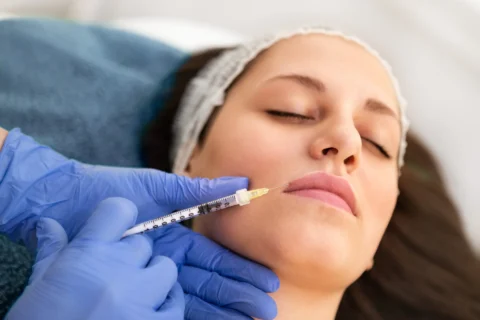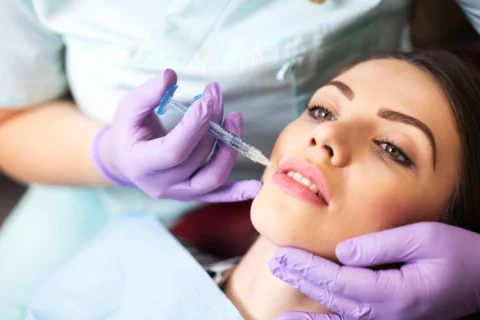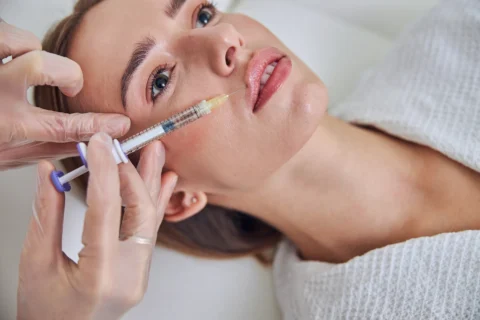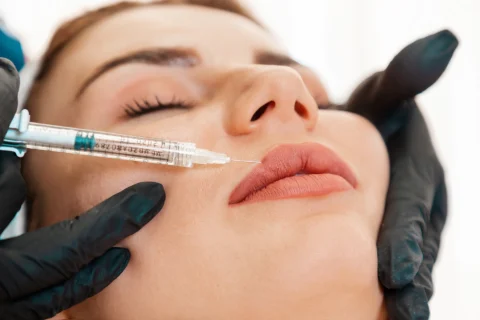Comparing Longevity Among Top Brands
Dermal fillers are gel-like substances that are injected into areas of the face and body to add volume. The are several types of dermal fillers used for lip augmentation.
The choice of dermal filler is important when considering lip augmentation, as some fillers last longer than others, with results varying based on individual factors. It is crucial for you to understand the differences between available dermal filler options in order to choose the treatment that best suits your aesthetic goals and desired longevity of results.
This guide will provide information on popular fillers available, factors that influence longevity, and considerations for choosing the longest-lasting lip filler.
What are Lip Fillers?
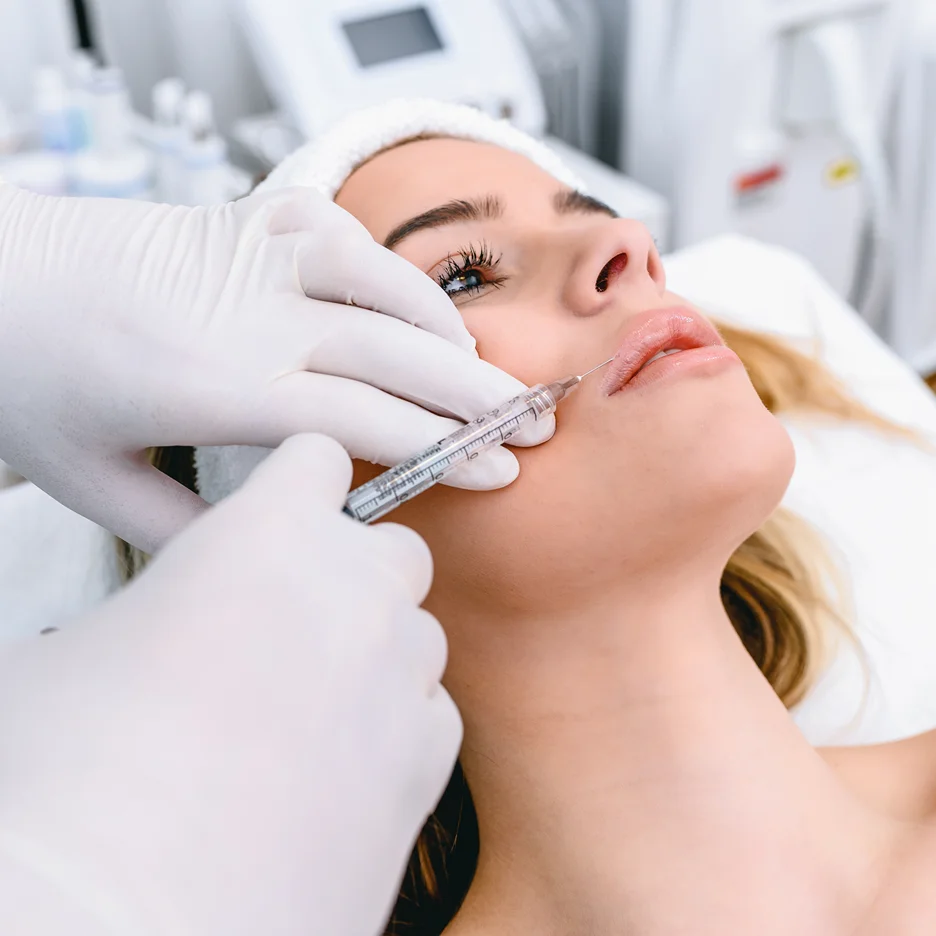
Lip fillers, also called lip injections or lip augmentations, are dermal filler treatments used to add volume and fullness to the lips. During a lip filler procedure, a biocompatible gel-like substance called a dermal filler is injected into the lips through a tiny needle or cannula.
Popular filler choices for lip augmentation include both hyaluronic acid-based fillers as well as collagen-based fillers. By adding this filler material, the lips appear fuller with more definition and a smoother appearance of lip lines.
The effects are seen immediately but can last anywhere from 6 months to over a year depending on the type of filler used and individual factors.
The Science Behind Hyaluronic Acid
Hyaluronic acid is a glycosaminoglycan that occurs naturally in the skin. As we age, natural hyaluronic acid levels decrease, leading to signs of aging like wrinkles and loss of volume. When hyaluronic acid dermal fillers are injected into the lips or face, they work by attracting water molecules to the injection site, restoring volume and fullness.
Hyaluronic acid is an excellent choice for lip fillers because it has a high affinity for water, gathering fluid around the injected areas. The cross-linked gel form used in many hyaluronic-based lip fillers, such as Juvederm and Restylane, allows it to maintain shape and volume in the lips for extended periods.
The Difference between Acid Fillers and Traditional Fillers
While both hyaluronic acid fillers and collagen fillers can temporarily augment lip volume, there are differences between the two filler types. Hyaluronic acid fillers are acid gel fillers made of a gel form of hyaluronic acid that attracts water to the lips for a more natural look and feel.
Traditional collagen fillers like bovine collagen were once popular but carry a small risk of allergic reaction. Collagen fillers do not have the same water-binding properties as hyaluronic fillers, resulting in a less hydrated appearance and shorter duration of effects.
Types of Lip Fillers
- Hyaluronic Acid-Based Fillers
Hyaluronic acid fillers are the most common and natural choice for lip augmentation. They integrate seamlessly into the skin, allowing for a smooth, youthful lip appearance. Hyaluronic acid fillers attract water molecules and replenish lost volume, restoring a fuller lip shape safely and gradually.
Some key benefits include a lower risk of allergic reactions, a more hydrated look and feel, and generally longer-lasting results compared to other filler types. Popular hyaluronic acid lip fillers injected using a small needle include Juvederm Volbella, Restylane Kysse, and Belotero Balance.
- Synthetic Fillers
Synthetic fillers are man-made alternatives to Hyaluronic acid. Some options include poly-L-lactic acid (Sculptra) and polymethylmethacrylate (PMMA). They are often used as permanent solutions, though PMMA carries more risk.
Though synthetic versions aim to imitate natural hyaluronic acid, differences do exist. Natural hyaluronic acid has a complex sugar structure, while synthetic hyaluronic acid attempts to recreate the molecule chains. Synthetic versions may degrade differently in the body over time.
- Collagen-Based Fillers
Once popular fillers, collagen-based options like Zyderm or Zyplast use bovine (cow) or human collagen to augment lips.
Bovine collagen carried a small allergic risk, while today’s collagen lip fillers are cross-linked to minimize reactions. However, collagen fillers typically result in shorter-lasting effects compared to hyaluronic acid options.
Benefits and Results
Dermal filler treatments can provide both functional and aesthetic improvements to the lips and surrounding areas. When performed skillfully, fillers yield natural-looking, long-lasting enhancements that address various signs of aging.
Achieving a Fuller Appearance
Hyaluronic acid and collagen lip fillers augment natural volume lost due to aging. By adding this volume, lips appear smoother, well-defined, and plumper immediately after injections.
Addressing Facial Wrinkles and Perioral Lines
Fillers help diminish the appearance of perioral lines like laugh lines and marionette lines that form over time around the mouth. This creates a more well-rested, youthful look.
Enhancing Facial Volume and Cheek Volume
Many fillers are also effective for restoring lost cheek and chin volume. This enhances facial features and structure.
Achieving Natural-Looking Results: A Key Aesthetic Goal
When applied proficiently, hyaluronic acid fillers yield subtle, gradual results preserving the lips’ natural movement and expression.
Potential Side Effects and Safety
1. Allergic Reactions
Signs of an allergic reaction include localized swelling, itching, or reddening after injection. This type of reaction occurs when the body identifies the filler as a foreign substance and launches an immune response.
Importance of a Patch Test
A patch test applied 2-4 weeks before injections help determine if the patient has an unusual sensitivity to any components in the dermal filler, such as lidocaine. The patch is left on for 48 hours to check for reactions like redness, swelling, or itching before proceeding with the full treatment. This reduces the risk of adverse responses during the actual procedure.
2. Other Adverse Reactions
Mild Swelling vs. Inflammatory Reactions
Some degree of mild, localized swelling at the injection site is normal within the first 24-48 hours as the body responds to the filler. This swelling typically resolves on its own.
However, excessive or persistent swelling beyond a few days could indicate an inflammatory reaction, especially if accompanied by pain, redness, or heat. Inflammatory reactions may require medical treatment such as oral steroids or hyaluronidase enzyme injections to dissolve the filler material.
Risks Associated with Blood Vessels and Blood Flow
Accidental perforation of small facial blood vessels near the lips during injection can lead to ecchymosis or bruising under the skin. This risk is minor when performed by an experienced provider, but larger blood vessels increase this risk.
Providers undergo extensive hands-on training to learn optimal injection techniques and anatomical knowledge to minimize unintentional puncture of vessels.
Maintenance and Longevity
Most fillers are advertised to last 6-12 months on average when considering individual factors like metabolism and lifestyle habits that impact absorption. However, the actual longevity seen in clinical practice is often longer than quoted durations when factoring in maintenance treatments.
Routine touch-ups help replenish gradual volume loss, extending the time between major renewal procedures. Follow-up injections every 4-6 months are important for maintaining the level of correction achieved. Without maintenance, filler results may slowly diminish over the typical 6-12 month period.
Comparing Lip Filler Longevities
When considering lip filler treatments, one important factor to evaluate is how long the results will last. Longevity can vary significantly depending on the specific filler material used. Understanding the projected duration of each type of lip filler helps patients determine which option may best suit their individual goals and lifestyles.
| Lip Filler Type | Longevity | Additional Information |
| Hyaluronic Acid Fillers | ||
| Juvederm | Up to 1 year | Considered one of the longest-lasting HA fillers. |
| Restylane | Between 6-10 months | Provides a moderate duration. |
| Belotero | Up to 6 months | Offers shorter longevity than other HA options. |
| Teosyal Products | Up to 12 months | Another top performer in longevity. |
| Synthetic Fillers | ||
| Silicone Fillers | Many years | The most long-lasting option but not reversible. |
| PMMA Microspheres | Several years | Long-lasting but not fully reversible. |
| Natural Fillers | ||
| Fat Injections | Duration varies | Can last 1-2 years with follow-ups. A natural option. |
| Collagen Fillers | 6-12 months | Lasts longer than HA but is less comfortable. |
Are You Ready to Achieve Lustrous Lips?
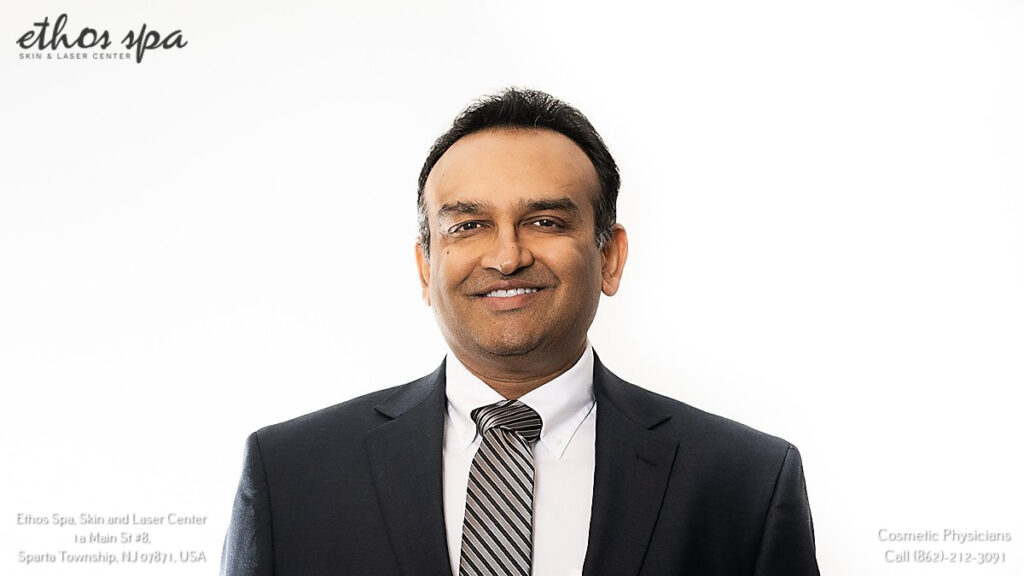
By now, you understand the many benefits of lip fillers from their ability to deliver natural-looking volume to their lengthy longevity when complemented by routine touch-ups. Choosing the right filler and highly-skilled injector is key to being fully satisfied with safe, beautiful results.
It’s time to transform your smile without surgery. Ethos Spa’s experienced practitioners are experts in selecting the ideal lip filler based on your specific goals and providing a relaxing, painless treatment experience from start to finish.
Don’t delay – contact us today to schedule a private consultation. Our professional team will listen to your desires, assess your needs, and develop a customized lip augmentation plan just for you. Whether you want subtly fuller lips or a more defined shape, Ethos Spa has the expertise and products to make your ideal pout a reality!

